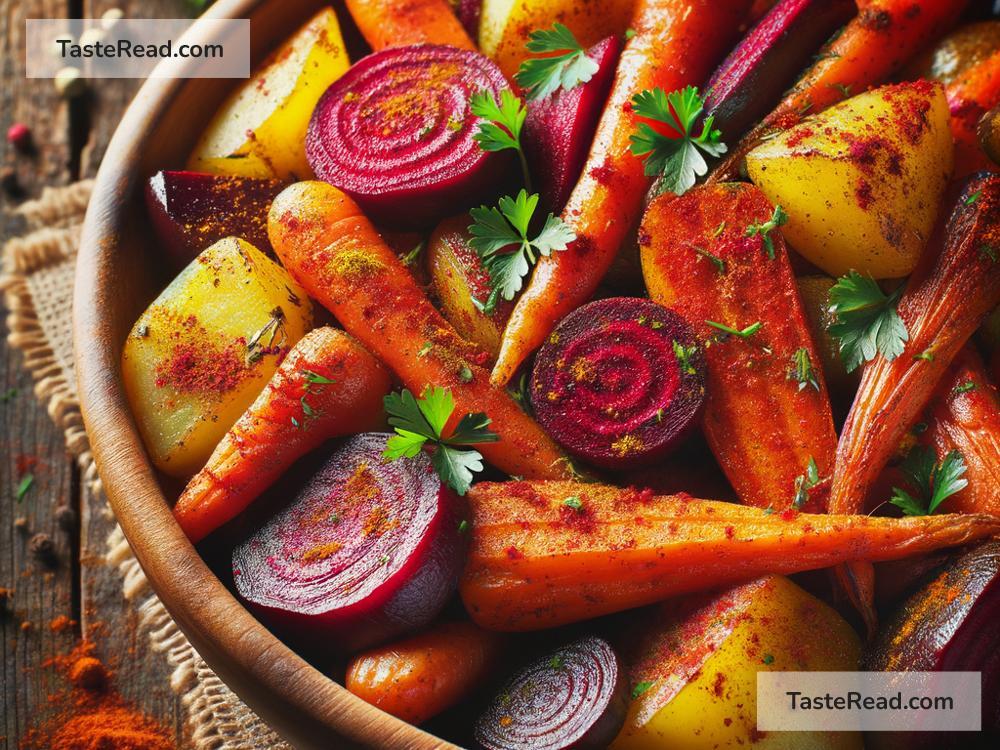The Interaction of Spices with Vegetable Flavors
Vegetables are the backbone of many dishes around the world. Packed with nutrients and fiber, they are a delicious and essential part of a healthy diet. However, the natural flavors of vegetables—whether sweet, earthy, or even slightly bitter—can be enhanced and transformed when paired with spices. Spices, with their rich and diverse profiles, give life to vegetables, making meals more exciting and satisfying. In this blog article, we’ll explore how spices interact with vegetables, the ways they complement one another, and tips for pairing spices with your favorite veggies.
Why Spices and Vegetables Work So Well Together
Spices are like tiny flavor bombs. Each spice brings unique aromas, tastes, and textures to a dish. When mixed with vegetables, spices help unlock the hidden depths of their flavors. Understanding this interaction is key to creating better meals at home.
Vegetables are naturally diverse in their flavor profiles. Carrots, for example, have a mild sweetness, while fennel has a licorice-like taste. Leafy greens such as spinach and kale can taste grassy or slightly bitter. Spices act like a bridge, balancing or amplifying these flavors to make them more appealing.
For instance:
– Sweet vegetables like carrots or sweet potatoes pair well with warm spices like cinnamon, nutmeg, or cloves. These spices accentuate the natural sweetness without overpowering it.
– Earthy vegetables like mushrooms and potatoes complement spices such as garlic, thyme, or rosemary. These spices enhance the depth of flavor, making the vegetables taste richer.
– Bitter vegetables like kale or broccoli can benefit from spices with a bold, sharp edge, such as chili powder, cumin, or smoked paprika. These spices counteract bitterness and add complexity.
The Science Behind Flavor Pairings
The interaction between vegetables and spices is no accident; it’s based on chemistry. Vegetables contain specific compounds that give them their unique flavor profiles. For example, sulfur compounds in onions and garlic create their pungent taste, while terpenes in bell peppers contribute to their fresh, slightly sweet notes.
Spices bring their own set of compounds to the table. The active components, such as capsaicin in chili peppers or cinnamaldehyde in cinnamon, interact with the compounds in vegetables to create new layers of flavor. This synergy is why a spicy lentil soup or a roasted vegetable curry can taste so dynamic and satisfying.
Moreover, spices stimulate your senses of taste and smell. Tiny amounts of spices can amplify flavors that already exist in vegetables, allowing them to shine. They can also introduce contrast, balancing flavors in a way that keeps your palate intrigued.
Common Spice-Vegetable Pairings
1. Root Vegetables (Carrots, Sweet Potatoes, Beets)
Root vegetables are naturally sweet, which makes them ideal for pairing with warm spices. Spices like cinnamon, coriander, ginger, and cayenne work wonders with these vegetables. For example, roasted sweet potatoes dusted with smoked paprika or cinnamon can taste smoky, sweet, and comforting all at once.
2. Leafy Greens (Spinach, Kale, Collard Greens)
Leafy greens can be bitter or earthy in flavor. To cut the bitterness, spices such as garlic, chili flakes, nutmeg, or turmeric are excellent options. Sautéed kale with garlic and chili flakes, for instance, can boost flavor while tempering bitterness.
3. Cruciferous Vegetables (Broccoli, Cauliflower, Brussels Sprouts)
Spices like curry powder, cumin, and mustard seeds pair beautifully with cruciferous vegetables. These spices enhance their nutty, slightly bitter qualities. Toss roasted cauliflower in a blend of turmeric, cumin, and paprika for an Indian-inspired dish full of color and warmth.
4. Tomatoes and Bell Peppers
Tomatoes and bell peppers thrive with Mediterranean-style spices like oregano, basil, thyme, and black pepper. These aromatic spices highlight their juicy, tangy flavors. A sprinkle of smoked paprika or ground coriander can add even more depth to roasted peppers.
5. Mushrooms
Mushrooms are rich and earthy, making them a perfect partner for garlic, thyme, rosemary, and black pepper. These spices complement the umami quality of mushrooms, creating a savory, satisfying flavor.
Tips for Experimenting with Spices and Vegetables
-
Start Small: When adding spices, a little often goes a long way. Begin with small quantities and gradually increase until you find the right balance.
-
Mix and Match: Don’t hesitate to combine spices to create unique blends. For example, cumin and coriander work well together, as do cinnamon and nutmeg.
-
Toast Your Spices: Before adding spices to vegetables, try toasting them in a dry pan or cooking them in oil. This releases their natural oils and intensifies their aroma.
-
Consider Cooking Methods: The way you cook vegetables—whether roasting, sautéing, steaming, or boiling—affects how they interact with spices. Roasting tends to bring out the sweetness in vegetables, making them ideal for warm spices, while steaming allows lighter spices to shine.
-
Trust Your Taste Buds: The beauty of cooking with spices is that there’s no one-size-fits-all approach. Experiment and adjust based on what tastes best to you.
Conclusion
The interaction of spices with vegetable flavors is a magical collaboration that can take basic veggies to a whole new level. From balancing bitterness to enhancing sweetness and adding layers of complexity, spices are truly the unsung heroes of plant-based cooking. Whether you’re preparing a warm carrot soup or a crispy kale salad, pairing the right spices with vegetables can make your meals more flavorful and enjoyable. So, next time you cook, don’t forget to reach for your spice rack—your vegetables will thank you!


